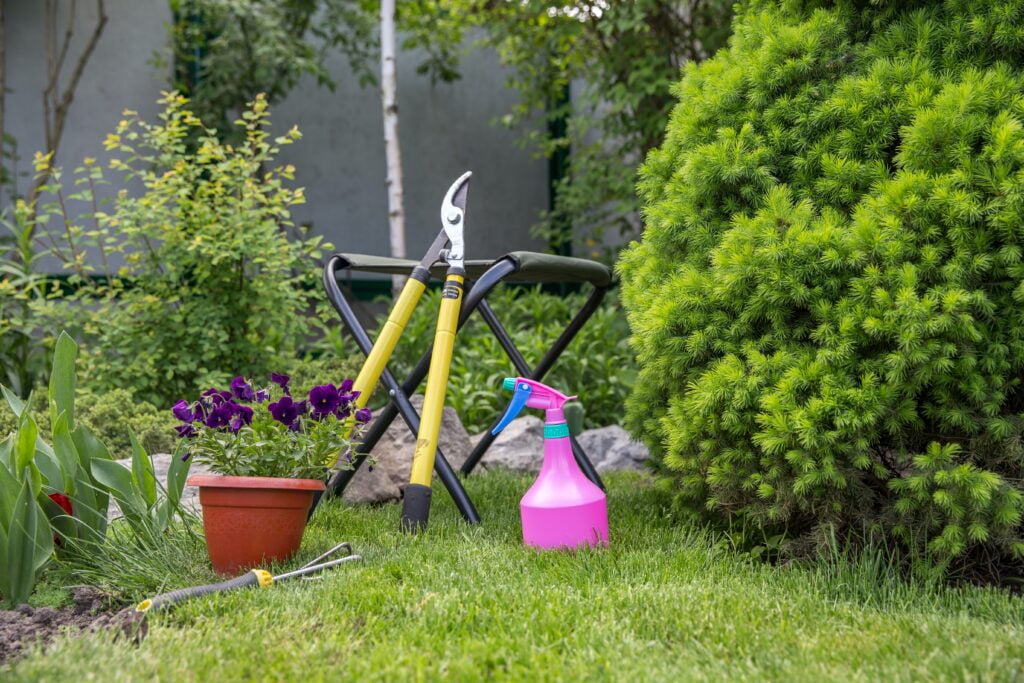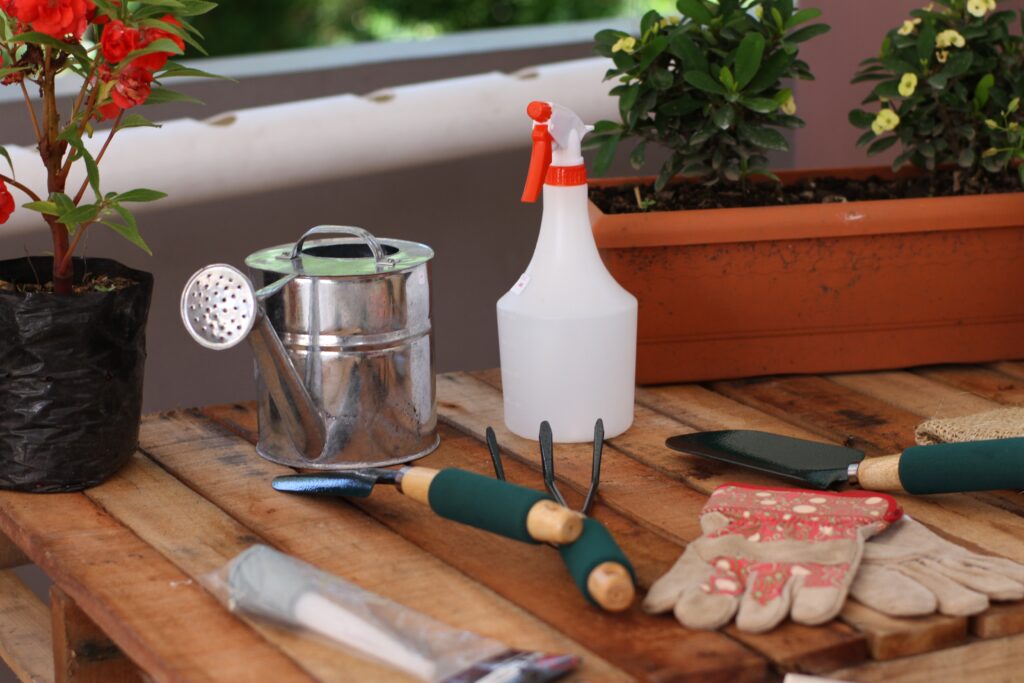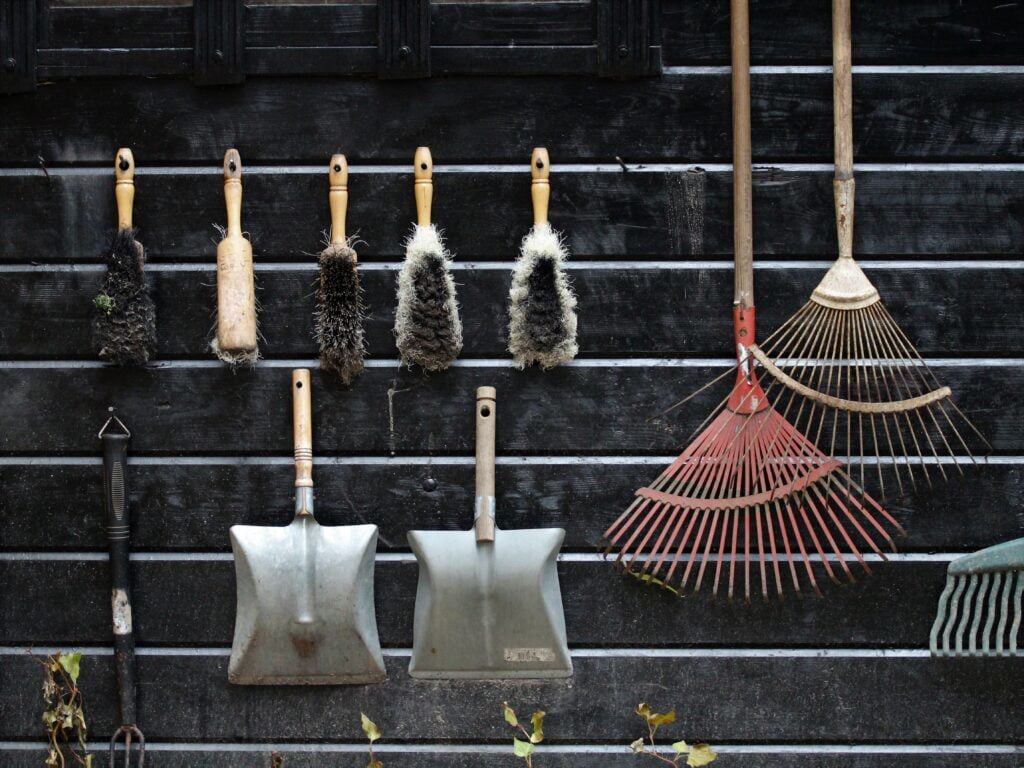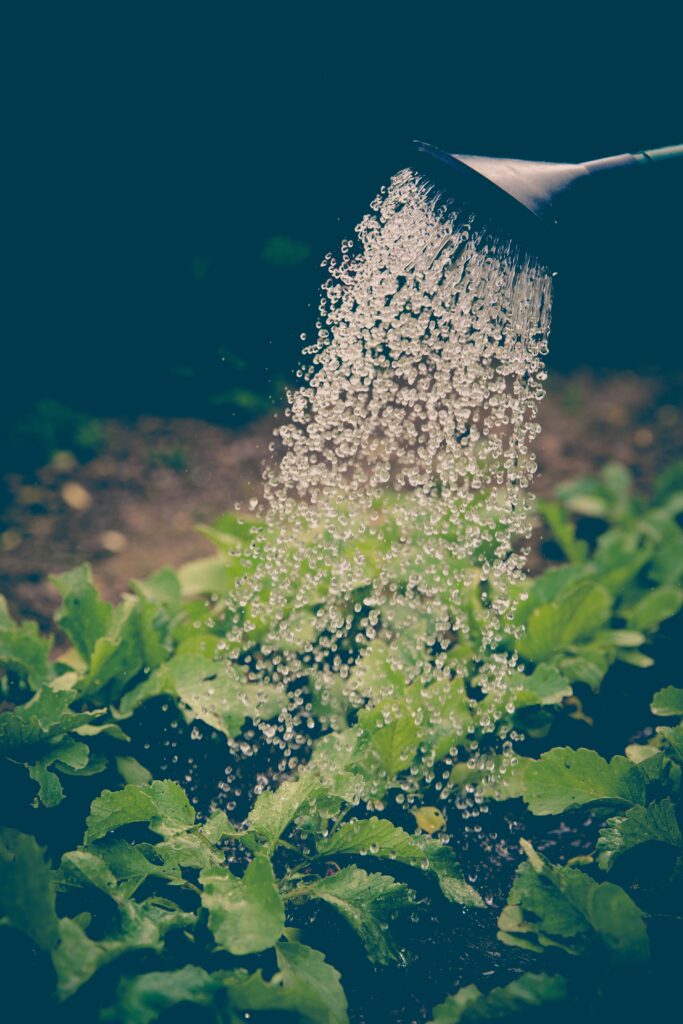When it comes to landscaping tools, it’s easy to go overboard. They can take up a lot of space and money, but focusing on the essentials can keep your shed or storage area from becoming overcrowded. There is always something bigger and better, but investing in the best quality tools your budget will allow, and maintaining them, can go a long way toward getting the most out of your investment.
Here are 12 garden gadgets to get you started.
1. Leaf Blower
Leaves change colour as autumn approaches. There are a plethora of them. Taking them out is a time-consuming task, but with the right tool, you can handle all of the work and a large number of them at the same time.
- Using backpack leaf blowers reduces post-cleaning physical aches. It will relieve all hand and leg discomfort. It functions like a vacuum cleaner and makes cleaning fun. You will also clean areas that a broom or shovel would not normally reach.
- In the garden, backpack leaf blowers are a motorised bag-like piece of equipment that blows leaves and other garden detritus with a stream of compressed air.
- Much less physically demanding work
2. Gloves
While gardening can be a rewarding hobby, it can quickly turn into a thorny and splintery nightmare if you don’t have the right gloves.
- Gloves should be tough but not overly bulky, especially when working with seeds or transplanting seedlings.
- Fit is important because ill-fitting gloves can cause blisters or cause accidents if they slip off.
- Water-resistant fabrics that are also breathable will keep your hands cool and comfortable.
- Longer cuffs protect the wrists and forearms from scratches and keep dirt out.
- Keep gloves out of direct sunlight, away from water, and away from insects.
3. Pruning Shears
Hand pruners, also known as secateurs, are used to control plants that have grown out of control. Anvil pruners, like a knife on a board, cut with a sharp blade meeting a flat surface. Bypass pruners, similar to scissors, cut with a sharp blade passing through a sharp-edged flat surface.
- Anvil pruners work best on dead wood but can cause crush injuries on fresh, green stems and branches.
- For live plants and green wood, bypass pruners are preferable.
- Pruners should be small enough to fit in the palm of your hand.
- Ratcheting pruners provide increased cutting strength, making them ideal for people who have limited hand strength or arthritis.
4. Loppers (cutters)
Lops are another type of cutting tool that are basically long-handled pruners that are used to trim hard-to-reach areas and cut thicker branches. The long handles provide the leverage needed to cut through branches up to an inch in diameter or larger. Pruners, like anvils, come in anvil and bypass varieties. Handles typically range in length from 16 to 36 inches.
- Bypass loppers are more accurate in cut location than anvil style loppers.
- Long-handled loppers can be quite heavy. Determine what you’ll be cutting and how far you’ll need to reach before purchasing the appropriate length.
- Handles made of lightweight aluminium or carbon-composite can be lighter.
- Keep lopper blades in good condition and sharpen them on a regular basis, just like pruners.
5. Garden Fork
Garden forks are a good tool for turning soil because they can dig deeper than a spade.
- Forks with a slight curve to the spines, similar to a pitchfork, are useful for scooping mulch or turning compost piles.
- Straight tines are ideal for digging in compacted, rocky, or clay soil.
- Square tines are more durable than flat tines, which can bend when they come into contact with a rock or root.
6. Hand Trowel
Trowels are an essential hand tool for transplanting bedding plants and herbs, planting containers, and removing weeds.
- Choose a broad blade for moving more soil or a long, narrow blade for digging up weeds or rocky soil.
- The handle should feel good in your hand.
- Trowels made of stainless steel, or with a stainless steel head, are more durable and last longer.
7. Spade
These square shovels with short handles are garden workhorses. They make digging holes for plants, edging, lifting sod, and moving small mounds of dirt from one location to another a breeze. This tool is more expensive, but a good spade will last you for the rest of your gardening life.
- When you need a little extra push, the treads on top of the blade provide a sturdier and more comfortable foot surface.
- The ash hardwood handles are long-lasting and absorb shock and vibration.
- Long or short handles are commonly available. Longer handles offer more leverage, but they are heavier.
- Stainless steel heads are durable and will not rust.
8. Rake
When leaves and debris fall, your sturdy rake will sweep them away. Rakes come in a variety of styles and sizes, but a standard leaf rake is a good place to start.
- Adjustable rakes perform the functions of multiple tools, reaching into tight spaces and gathering large piles of leaves.
- Steel tines are more durable and may be more abrasive on delicate lawns than plastic tines.
9. Hoe
What type of hoe you need depends on the type of garden you have. A sturdy, wide hoe may be required for a vegetable garden. Perennial gardens may necessitate a more delicate touch and a thinner hoe. Hoes are useful for weeding and preparing garden and flower beds.
- Look for a handle that is comfortable to hold and has a long reach.
- A sharp blade is more effective and easier to use.
- Weeding hoes, also known as hula or stirrup hoes, have an open square head that is pushed back and forth just beneath the soil surface to cut down on top growth.
- In vegetable gardens, flat hoes are useful for turning the soil in rows.
10. Garden Hose with Adjustable Nozzle
Water is the lifeblood of your garden, so make sure your garden hose can reach and spray everywhere. There are three basic hose diameters: 12 inch (average 9 gallon per minute), 5/8 inch (average 15 gallon per minute), and 34 inch (up to 25 gal per minute). You can control the water pressure and spray radius with an adjustable nozzle.
- Before purchasing a hose, calculate the length you will require.
- Water pressure is affected by hose length; the longer the hose, the lower the resulting pressure.
- Vinyl hoses are lighter in weight and less expensive, but they kink more easily and do not last as long as rubber hoses.
- Hoses should be stored coiled and out of direct sunlight. Storing with kinks can lead to weak spots.
11. Watering Wand
With a water-breaking wand, give your plants a gentle rain shower. The extra reach is also useful for reaching out-of-the-way containers, hanging plants, or the back edges of borders. Watering wands are available in a range of lengths ranging from 10 to 48 inches.
- Choose a length that is appropriate for your needs: longer for high hanging baskets, shorter for tighter spaces.
- Built-in shut-off valves in the handle save water while allowing you to adjust the flow.
12. Watering Can
Watering cans are classified into two types: plastic and metal. There are hundreds of different styles, colours, sizes, and nozzles to choose from.
- Plastic cans are lighter than metal cans, but they do not last as long.
- To prevent rusting, metal cans should be galvanised.
- Consider the size of the can in comparison to your strength; a gallon of water weighs slightly more than 8 pounds.
- The handle position should allow you to carry a full can while also allowing you to easily pour it.
- Two-handled designs provide greater stability for children and the elderly.






1 comment